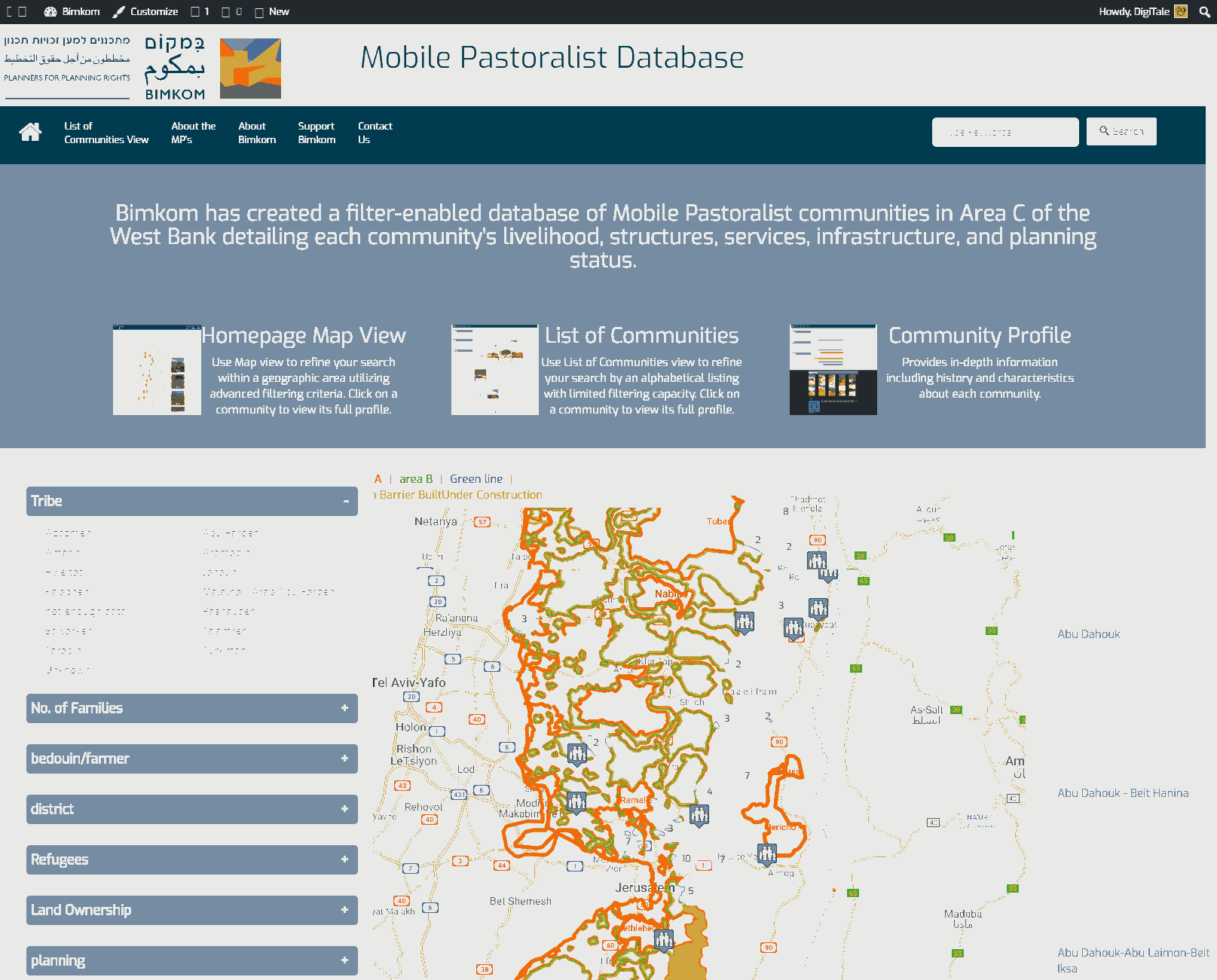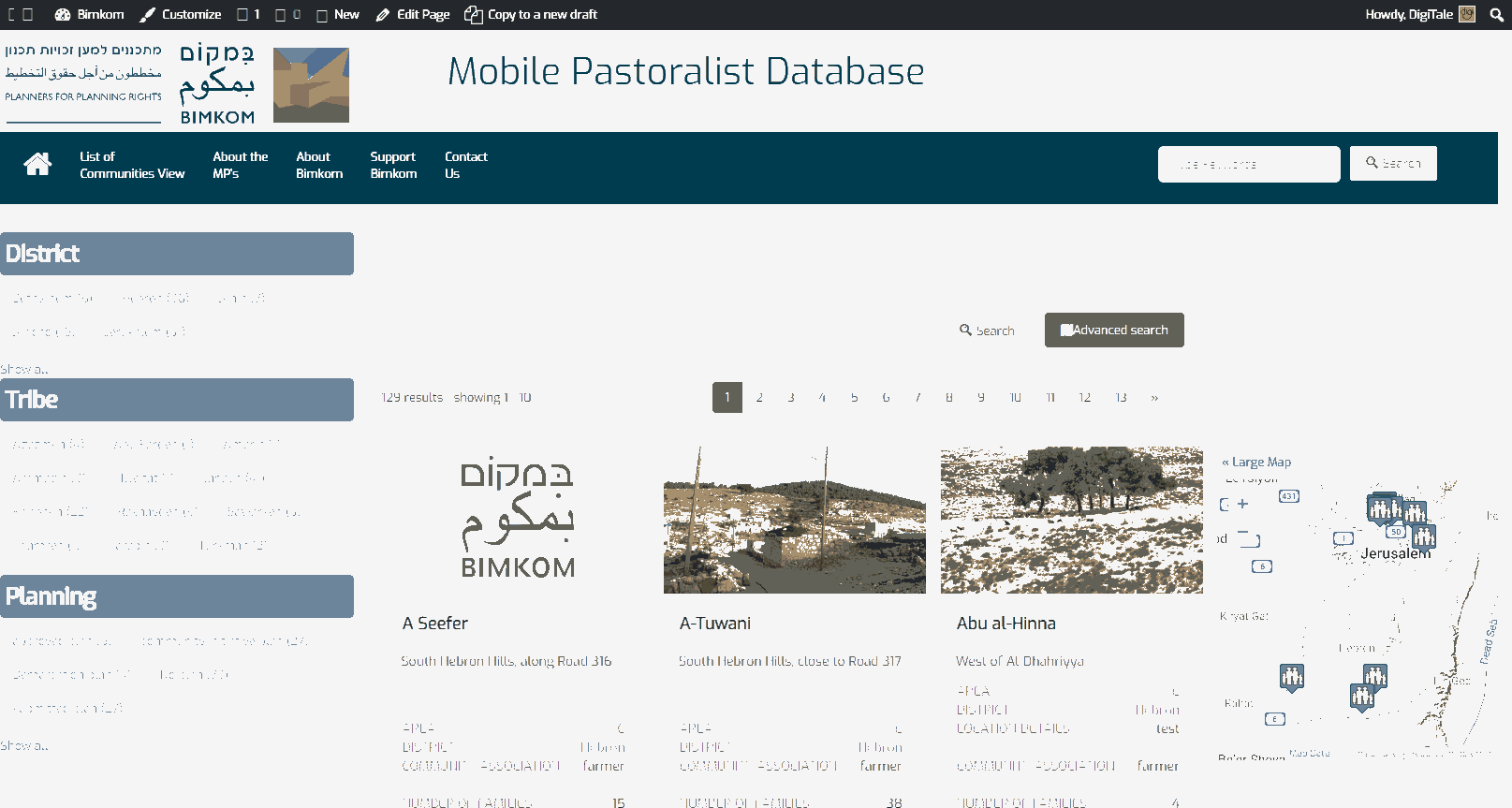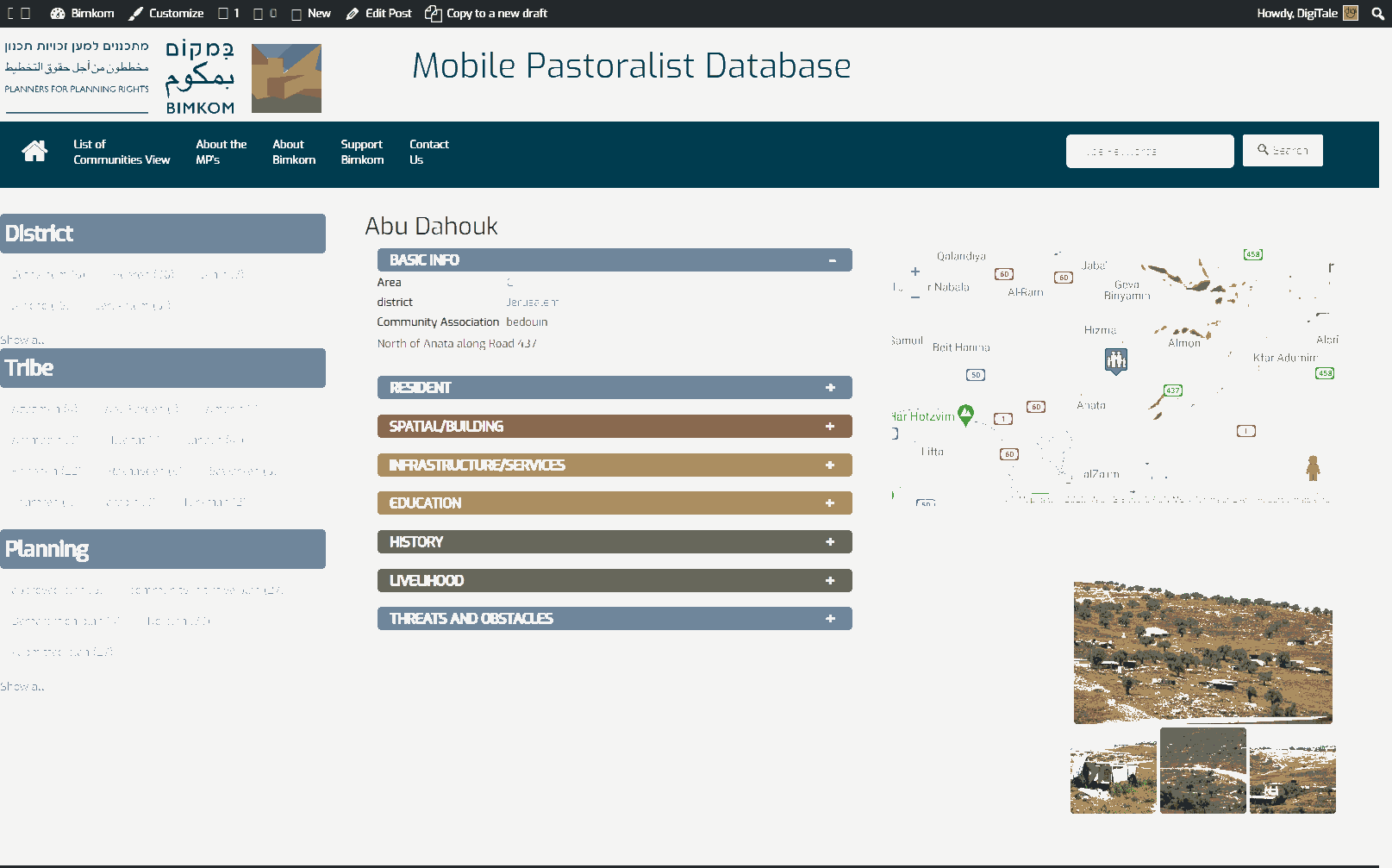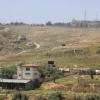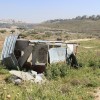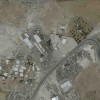North of Anata along Road 437
Abu Dahouk
Resident
Number of Families
80
Tribe
testing the tooltip
Jahalin
Sub-Tribe
Azazme, Shawahin
Refugees
Unknown
Spatial/Building
Land Ownership
- lease
- private
Planning
No plan
Planning - details
Approved plan for gas storage (Num 1583/50/15) adjacent to community
Structure Type
- concrete
- stone
- tin shack
Building materials - details
20% of the residents have built permanent houses (these are families who bought their land in the 1980s and 1990s from Anata residents) and 80% have temporary structures made of tin and other recycled materials (these are families who do not have ownershi
Infrastructure/Services
Access to Community
private vehicle
Water Access
connection to neighboring village
Water Access - details
There is no formal infrastructure (water, electricity) in the community due to land ownership disputes between the Bedouins and residents of Anata. In order to receive a formal connection to the water or electricity networks, a household must prove its residence and ownership. Sometimes members of the community build informal sub-connections to nearby houses in Anata which are formally connected to the water and electricity networks. According to these arrangements, a meter is usually installed between the formally connected house and the informally connected house. The informally connected Bedouin household will then pay the formally connected household according to the meter. Of course such arrangements are based on trust and good will.
Electric Connection - details
There is no formal infrastructure (water, electricity) in the community due to land ownership disputes between the Bedouins and residents of Anata. In order to receive a formal connection to the water or electricity networks, a household must prove its residence and ownership. Sometimes members of the community build informal sub-connections to nearby houses in Anata which are formally connected to the water and electricity networks. According to these arrangements, a meter is usually installed between the formally connected house and the informally connected house. The informally connected Bedouin household will then pay the formally connected household according to the meter. Of course such arrangements are based on trust and good will.
Health Care - details
A doctor comes infrequently to visit the community (the check-ups are not thorough) and the local pharmacy is both expensive and under-stocked with drugs. Health insurance is expensive and generally unaffordable, whether from the PA or from a private provider.
Location of Services
Anata ?
Education
Kindergarten
No
Kindergarten - details
There is no kindergarten in the area. If a family wants to send their children to a private kindergarten, they must pay NIS 1600/ year, which is unaffordable. The Bedouin who go to 1st grade therefore already find themselves two years behind the rest of the class.
Location of School #1
Anata
Schools - details
There are up to 45 children in each classroom in the public school, which is too large for productive learning despite families paying NIS 70-80 per child/ year for public schooling. Private schools are approximately NIS 2000/ year, which is unaffordable.
History
History
The Bedouins who live in Abu Dahouk are refugees from Beer Sheva.
livelihood
Seasonal Movement
no
Other Occupation
- herd without shepherding
- shepherding
Main Occupation
- herd without shepherding
- shepherding
Woman's Occupation
- agriculture
- self employed
General Livelihood - details
It takes approximately NIS 2/ day to maintain one sheep (1.5 for food, .5 for water), which translates to NIS 800/ year. Additional expenditure of lease or purchase of land. The Bedouin in Anata have sold approximately 70% of their flocks because they were economically unsustainable. This was due to restrictions on grazing land (forced relocation and separation barrier) and isolation of key markets (Jerusalem). Once income approached the costs of living, families began to sell more animals to cover their necessary expenditures. The respondent indicated that income might only cover 80% of expenditures.
Very few Bedouin work in formal positions because formal work is physically remote and because Bedouins do not enjoy the kind of cultural exposure at home that prepares them for participation in the urban workforce. Approximately 7 families in Abu Dahouk are supported by female heads of household. These women usually raise chickens or keep small store.
Very few Bedouin work in formal positions because formal work is physically remote and because Bedouins do not enjoy the kind of cultural exposure at home that prepares them for participation in the urban workforce. Approximately 7 families in Abu Dahouk are supported by female heads of household. These women usually raise chickens or keep small store.
Threats and obstacles
Threats and Obstacles
fjfxjsfjsyjsyj
- firing zone/closed military zone
- separation barrier
Number of Demolition Orders
48
Number of Demolitions
22

